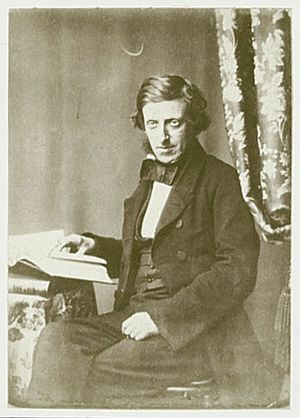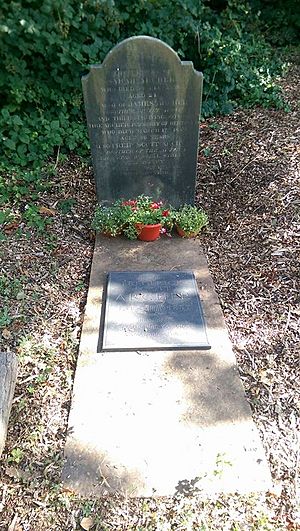Frederick Scott Archer facts for kids
Frederick Scott Archer (born in 1813, died May 1, 1857) was an English inventor, photographer, and sculptor. He is famous for creating the collodion process, a new way to make photographs. This invention made photography much easier and cheaper for everyone to use. He was born in England, either in Bishop's Stortford or Hertford.
Contents
About Frederick Scott Archer
Frederick Scott Archer was the second son of a butcher. He grew up in Bishop's Stortford, Hertfordshire. As a young man, he moved to London to become an apprentice. He learned the skills of a goldsmith and silversmith.
Later, he trained to be a sculptor at the Royal Academy of Arts. He found that photography was a helpful tool for his art. He used early photography methods, like the calotype, to take pictures of his sculptures.
Inventing the Collodion Process
Scott Archer was not happy with the quality of early photographs. Calotypes often looked blurry and needed very long exposure times. He wanted a way to capture images with more detail and better contrast.
So, he began to experiment. In 1848, he invented a new photographic method called the collodion process. He shared his discovery with the world in March 1851, publishing it in a magazine called The Chemist.
This new process was amazing! It combined the sharp details of the daguerreotype method with the ability to make many paper copies, like the calotype. This meant photographers could get clear, detailed pictures and print as many copies as they wanted.
Scott Archer chose not to patent his invention. This meant he gave his discovery as a gift to the world. Because of this, he did not make much money from his brilliant idea.
Life as a Sculptor
Besides his photography work, Scott Archer was also a talented sculptor. He showed his sculptures at the Royal Academy of Arts from 1836 to 1851.
Some of his known sculptures include:
- A bust of Sir George Smart (1839)
- A statue of Alfred the Great (1844) in Westminster Hall
- A bust of the Dean of Manchester (1848)
- A memorial for Lady Albert Conyngham (1850)
- A bust of the Marquess of Northampton (1850)
- A statue of Gertrude Hanson (1851)
Later Life and Legacy
Frederick Scott Archer died on May 1, 1857. He passed away from a liver disease that had affected him for several weeks. He was buried at Kensal Green Cemetery in London.
Because he did not patent his invention, he died without much money. An obituary described him as a "very inconspicuous gentleman, in poor health."
After his death, people raised money to help his family. They collected £747, which was a large sum at the time. His three children also received a small pension after their mother passed away.
Today, you can find some of Scott Archer's photographs in the Royal Photographic Society collection. Others are kept at the Victoria and Albert Museum. His invention changed photography forever, making it available to many more people.
Collection
- International Photography Hall of Fame, St. Louis, Missouri
See also
 In Spanish: Frederick Scott Archer para niños
In Spanish: Frederick Scott Archer para niños




